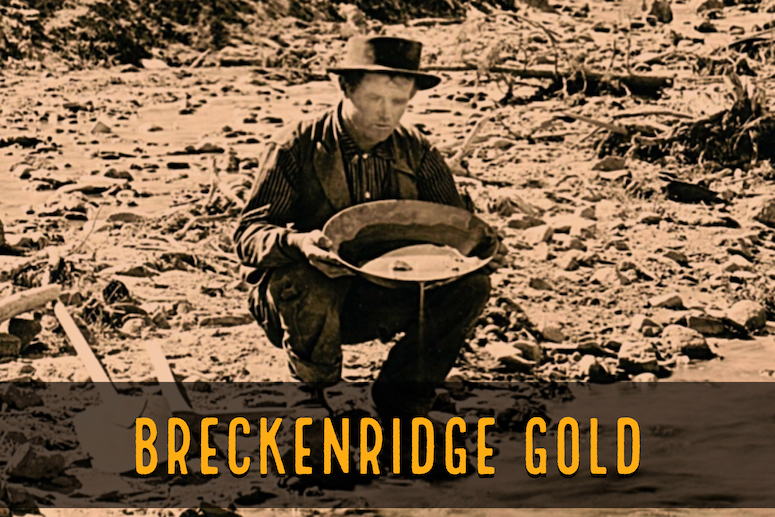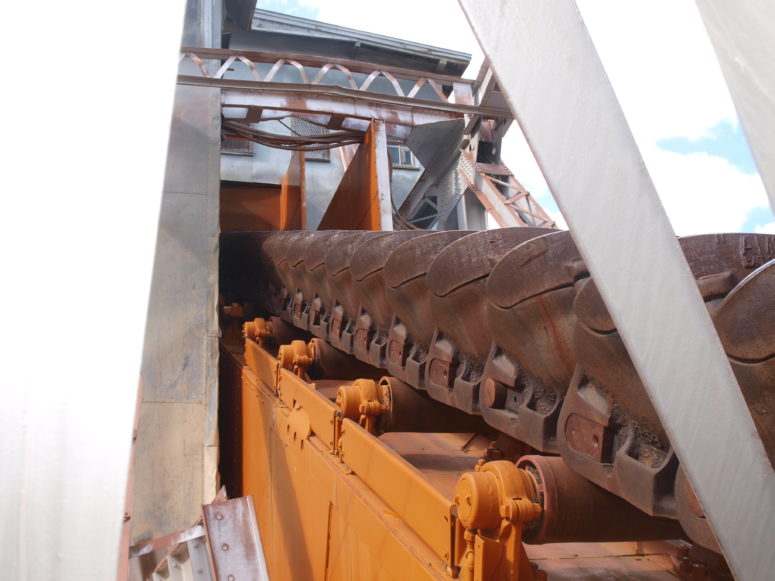
Breckenridge came to life in 1859 when gold was discovered by prospectors along the banks of the Blue River passing through the area. Soon a town was formed to cater to the needs of the growing number of miners who rushed to the area from earlier mining camps in Colorado.
Breckenridge has had many lives. To understand its history let’s consider the major booms that marked major milestones in the survival of the town, from a small mining camp to the tourist destination it is today.
Gold Strike on the Blue River
The Colorado Gold Rush of the mid-1850s brought thousands of miners in the region. The first records indicate that men passing through the area panned gold along the banks of the Blue River in the summer of 1859.
The town was formally organized in November 1859 by George Spencer and his prospecting company on a piece of land along the Blue River. The town then grew rapidly and got a postoffice in 1860. Breckenridge flourished in those first years, as the placers were rich and easily recovered.
By this time the town was booming with many businesses and over a thousand residents who worked in the nearby mine. Subsequently, the town was named the Summit County headquarters in 1862.
Placers certainly weren’t limited to the Blue River. Most of the creeks around Breckenridge would also produce some color. French Gulch was especially noteworthy for its rich gold deposits. One ridge to the north was the Swan River which was also productive for its entire length. Numerous rich ore bodies were located in the mountains east of town, although many of these would not come into production for many years.
After a few years the best gold deposits began to dry up and many miners began to leave the town. By 1864, new gold discoveries had been made in Idaho and Montana that were attracting many of the Colorado miners to seek out new ground to work.
Hydraulic mining was brought in the mid-1860s which opened up new areas for miners to work. They did not change the fortunes of the town as many miners had already left. By 1870 the population of Breckenridge was less than 100.

Abundant Silver Ores Renew Interest in Breckenridge
In 1879, silver/lead deposits were discovered on the hills near the original site of the town. This gave the town a shot of life back as miners who came to work and develop the mines. The development of these silver mines resulted in more sustainable growth of the town.
The population soon grew to over 1500 people and many new buildings including some important mining infrastructure were added to the town. The silver strike was much more sustainable than the early gold rush that occurred in the area. The investment and development that went into these deep silver mines ensured that the town was not going to fade away anytime soon.
Breckenridge got its first newspaper and in 1882 the Denver, South Park and Pacific railroad reached the town and opened a depot in down. The arrival of the rail line helped further sustain the town by connecting this remote mountain town to the outside world.
By this time the population of the town had grown to over 2000 residents. These were not just miners, but nearly all jobs were to cater to the miners with food, supplies, and of course whisky.
In the next decade, the town grew from a small mining camp to a busy town with a commercial district with offices, businesses, and commercial streets. The number of newspapers in the town tripled to three and two more fire stations were also set up to serve the growing town. More advanced hotels were also set up to serve visitors and the affluent residents build more elegant residential homes overshadowing the log cabins that made up the town during the gold boom.
The silver deposits proved to be quite rich sustaining the town for much longer than the gold mining did. However, the Sherman Silver Act and the Panic of 1893 that followed brought steep declines in silver prices. It was a hard gut-punch to Breckenridge.

Gold Dredges Churn up the Blue River, Swan River & French Gulch
Around the turn of the century, a new technological marvel was making it possible to rework placer ground one deemed unprofitable. Huge bucket line dredges came to Breckenridge in 1898, and continued mining through the early 1900s.
The early placer miners worked the shallow bedrock areas that could easily be worked by hand. Gravels were manually shoveled and run through sluice boxes. Hand placering was effective in some areas, but the deeper gravels could not be efficiently mined. The dredges changed that.
Soon there were dredging operations in all rivers around the town such as Blue River, French Gulch and Swan River. These huge machines would slowly move up the valley bottoms, digging up gravels up to 70 feet in depth. Iron buckets pulled gravels from the depths for processing inside the dredge.
Dredging was productive for several decades to follow, but they did not sustain a large population. Each dredge had a crew of men, but the mechanized nature of these dredges required considerably less manpower than the hard rock silver mines that were active in the previous decades.
The last dredges were forced to shut down in 1942, when all non-essential mining operations were halted in the United States due to World War 2. This was the final blow to Breckenridge from a mining standpoint.

Present Day: Gold Panning in Breckenridge
Tourism and skiing are the economy of Breckenridge today. Most of the mining is long over, but this town didn’t fade away like many of the early mining camps of the West. The beautiful mountain setting of Breckenridge have allowed it to flourish.
There are also a lot of fun activities worth seeing if you are visiting Breckenridge. Here are a few mining related sites that are worth checking out.
About 2 miles east of Breckenridge is the Country Boy Mine. They offer an underground mine tour and gold panning, along with a lot of other fun family-oriented activities.
This is another underground mine tour about 2 miles southeast of Breckenridge. Learn about the early history of Breckenridge while visiting one of the bigger active mines in the 1880s.
If you are looking for an easy spot to dip your gold pan into the water, then check out the Lomax Placer Mine. It is located at an old hydraulic mining site. You can still sift through the gravels and find a bit of gold.
Unlike many other Colorado towns that offer quite a bit of “recreational” prospecting opportunities for the casual gold panner, there aren’t very many open prospecting areas. Nearly all of the old dredge tailings on the Blue River and Swan River now sit on private property. Most of the old mines east of town are part of patented mining claims that are also private.
A good number of the creeks and gulches that drain into the rivers, particularly east of Breckenridge do have gold in them. There aren’t any signs to instruction to find these areas. It will take your own research to find places on Forest Service land that are not actively claimed. If you aren’t the adventurous type, then your probably better off sticking to one of the panning experiences listed above.
Next: Gold Panning in Ouray & Telluride

